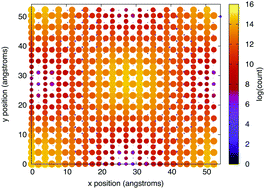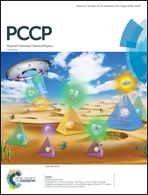On the mobility of carriers at semi-coherent oxide heterointerfaces
Abstract
In the quest to develop new materials with enhanced ionic conductivity for battery and fuel cell applications, nano-structured oxides have attracted attention. Experimental reports indicate that oxide heterointerfaces can lead to enhanced ionic conductivity, but these same reports cannot elucidate the origin of this enhancement, often vaguely referring to pipe diffusion at misfit dislocations as a potential explanation. However, this highlights the need to understand the role of misfit dislocation structure at semi-coherent oxide heterointerfaces in modifying carrier mobilities. Here, we use atomistic and kinetic Monte Carlo (KMC) simulations to develop a model of oxygen vacancy migration at SrTiO3/MgO interfaces, chosen because the misfit dislocation structure can be modified by changing the termination chemistry. We use atomistic simulations to determine the energetics of oxygen vacancies at both SrO and TiO2 terminated interfaces, which are then used as the basis of the KMC simulations. While this model is approximate (as revealed by select nudged elastic band calculations), it highlights the role of the misfit dislocation structure in modifying the oxygen vacancy dynamics. We find that oxygen vacancy mobility is significantly reduced at either interface, with slight differences at each interface due to the differing misfit dislocation structure. We conclude that if such semi-coherent oxide heterointerfaces induce enhanced ionic conductivity, it is not a consequence of higher carrier mobility.



 Please wait while we load your content...
Please wait while we load your content...